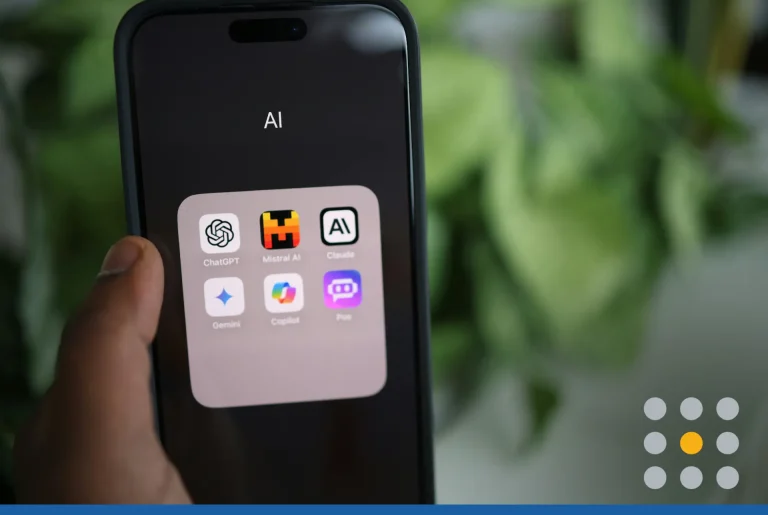When you’re trying to craft great copy for your business website, remember one thing. All relationships begin with words.
“Hello.” “Good morning.” “What’s your name?” “What do you do?” “How can I help you?”
Words have the power to create connections where they didn’t exist before. And when you say something of value, people have a reason to listen and act.
So, how do you turn a few words into a purposeful message that converts website visitors into customers?
Imagine what it’s like to introduce yourself to new people at a business event. Choosing what to say can be hard. There’s probably a million different things you could share about yourself. Of course, you could do what most people do — say something empty and forgettable just to fill the silence.
The better option is to listen first and learn about the person standing in front of you. The more you know about your audience, the easier it is to choose the right words at the right time.
Connecting with people online is no different. A company website is your virtual handshake — an elevator pitch that sells your business 24 hours a day. You have to know who you’re talking to and make every word count. If you want to write words that drive action, follow these pro copywriting tips for websites.
1. Study the competition
Take a good look at competitor websites. Some are doing well, while others are struggling. Chances are, your most successful competitors are good at communicating with customers. They know what customers want, and they deliver concise on-target solutions.
Sometimes, a competitor’s copy is so compelling that you’re tempted to buy something. A distinct brand personality comes through in every bit of marketing copy, drawing you in. To win customers, you have to figure out how to exude this type of character. Make a list of competitors you admire, and answer these questions.
- What personality traits describe the brand?
- What language conveys these personality traits?
- What do I feel when reading the brand’s marketing copy?
- Can I summarize the brand’s value proposition in a few words?
As you answer these questions, clear patterns should emerge. Good copywriting is focused. You should have no trouble identifying the type of customer it’s targeting.
2. Write for an ideal customer
Writing for a broad audience is like sending a package without a destination. There’s no way it can land in the right place when you don’t know who’s on the receiving end. Define your core customer segment, and write like you’re speaking to a specific person.
- Who are these core customers?
- How do your customers spend their time and money?
- What problems bring customers to your business?
- Why do customers choose you over a competitor?
- What questions do customers need answered before they can act?
- What stops them from making a buying decision now?
The goal of everything you write is to connect with that ideal customer. Know your customers, so you can speak their language.
3. Summarize your core benefits
Web readers have short attention spans, so you have to get your point across fast. When you’re brainstorming copy, think of your business features as a pyramid. Make a list of the features and benefits that set your business apart.
Now this is important. Write them out in full sentences. And then, cut, cut, cut, cut. Here’s why.
Before you start writing, you might think it makes sense to set a specific word count. In reality, you should whittle down your copy to its simplest form. Long form is great for a sales letter or blog post, but you have to keep people around long enough for them to read more. Gateway website copy should get customers to act sooner, not later, and that means keeping it short.
With this in mind, try to arrange features and benefits in order of importance. The most compelling value points should come first in your copy. Do your best to combine features that have the same benefits.
The end result should be brief value proposition statements that reinforce the call to action. Attract customers with strong gateway copy, and you can elaborate more about your business and services on other pages of your website.
4. Use simple, personable language
Creating a website with the most business jargon isn’t a contest you want to win. Great copywriters don’t try to sound smart by using big words. They stand out as experts because they learn everything they can about the audience and craft precise content.
Stick to simple language that conveys your meaning without any confusion. Consider this sample copy from cloud accounting software, FreshBooks.
“Wow your clients with professional looking invoices that take only seconds to create. The best part? You’ll get paid faster, too.”
The value proposition is clear and delivered in a friendly, upbeat tone. More importantly, it answers the question, “What’s in it for me?” Customers are hooked from the start and know what to expect as they explore the site.
5. Find the right angle
Once you know your customers, think about the best way to frame your message. All the work you’ve done to develop your brand will help you choose an angle. How would a conversation between your brand and your ideal customer sound? Casual? Conservative? Irreverent? Perky? Youthful? Humorous?
The right framing should reflect what’s most important to your customers. How do they think? Are the motivated by fear or confidence? Problems or goals? Logic or emotions? Here are common ways to approach your audience.
Slay a dragon: Dragon-slaying is an effective way to show empathy toward your audience and build rapport. Basically, you present a set of conditions that apply to your reader. You know what problems your customers are facing, and you have a way to make their lives easier.
Indulge an aspiration: Most people have something they want to accomplish, but keep putting off. Build up a seductive image of how it would feel to finally achieve those elusive goals. Then, describe how your business can put those goals within reach.
Anticipate a desire: The majority of businesses sell products that are purely for convenience or recreation. Customers don’t need them, but they want them. People buy things because they crave satisfying experiences, especially if others are doing the same. Play upon this consumer desire to feel something and keep up with the Joneses.
6. Work backward from the call to action
Think about the action you want customers to take, and work backward from there. Do you want people to contact your business? Try out a free introductory product or service? Sign up for a newsletter? Apply for a job?
As simple as it seems, the best copy tells readers exactly what they should do. The point isn’t to be pushy, but to offer assurance that you understand what the reader needs. Let’s look at the example of FreshBooks again. The following tagline, body copy, and call to action were used to prompt users to sign up.
“Small Business Accounting Software That Makes Billing Painless”
“The all-new FreshBooks is accounting software that makes running your small business easy, fast and secure. Spend less time on accounting and more time doing the work you love.”
“97% of small business owners recommend FreshBooks. Get started for free.”
In under 50 words, the copy accomplishes five important things.
- It identifies the core audience — small business owners.
- It slays a dragon by making billing “painless” and “secure.”
- It indulges an aspiration — spending more time on enjoyable tasks.
- It offers social proof — recommendations from similar customers.
- It tells customers what to do — get started at no cost.
7. Put website copy to the test
Effective copy doesn’t just sound good; it gets the job done. When you have a solid draft, test it out on people you trust. Ask them to answer these four questions in as few words as possible.
- What does the business do?
- What value does the business offer to customers?
- What makes the business different from competitors?
- What is the customer’s next step after reading the content?
If the answers are all different, you have a problem. If the answers are consistent but long-winded, you probably need to refine your messaging. The best copy sounds incredibly simple. But ironically, it takes time and patience to achieve that level of effortlessness.
Keep narrowing your focus to reach your customers and compel them to act. Most customers don’t know exactly what they want until you tell them. Use words as your bridge into the customer’s world, and draw a map to the right solution.
Thinking about creating a website for your business? Make one quickly and easily with our website builder solutions.







